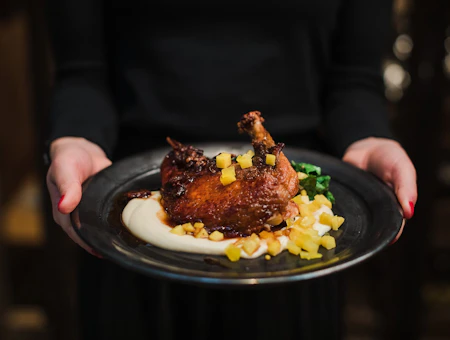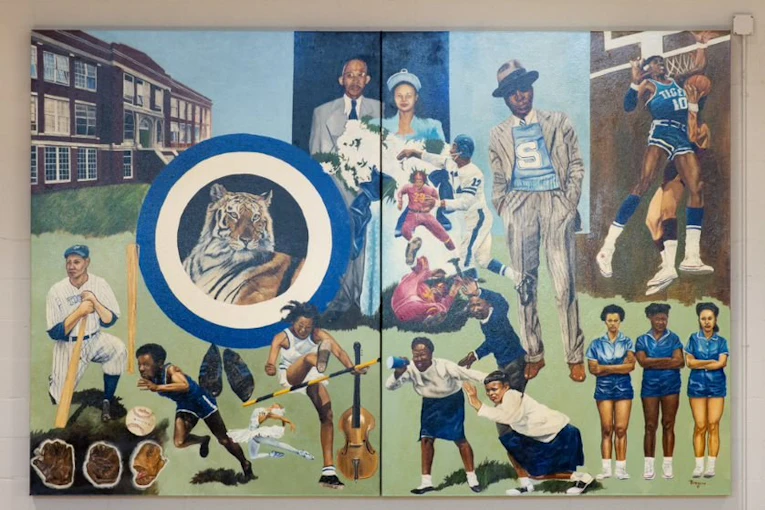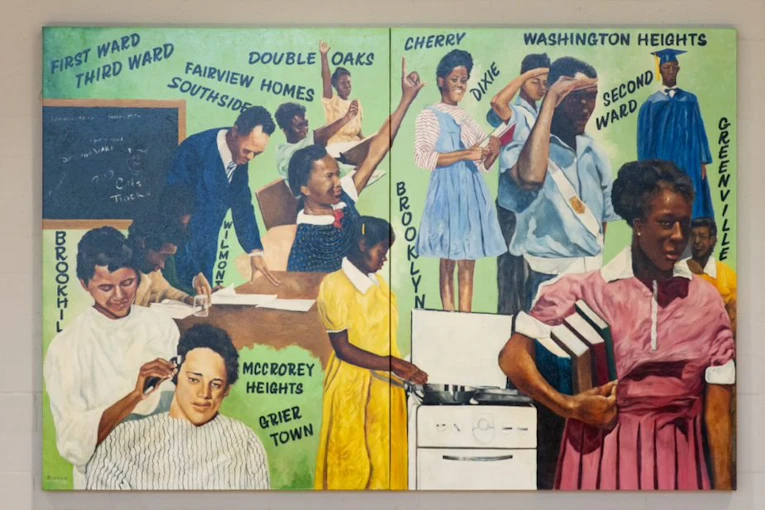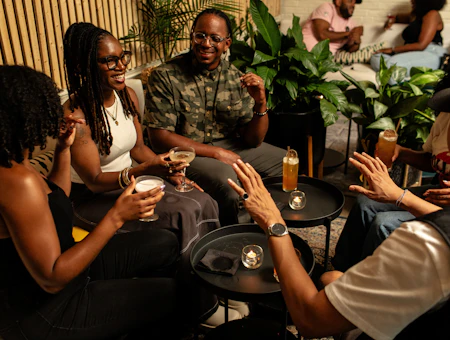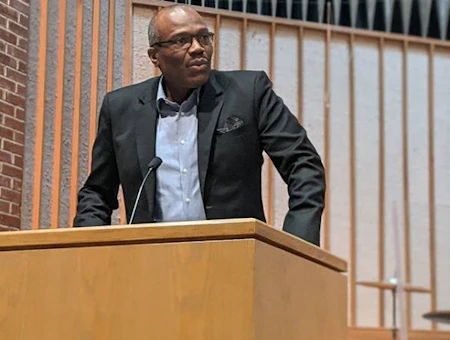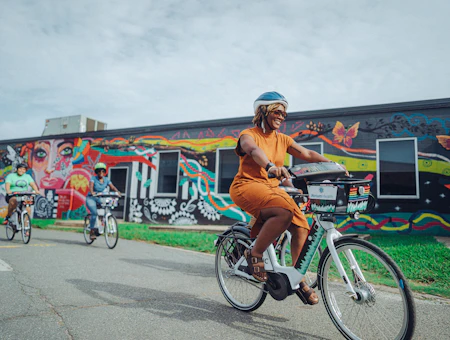Murals that Honor Black History in Charlotte
These murals tell the stories of Charlotte’s African American history in a unique and profound way.
by Brittany Jenkins
Murals all over the Queen City pay tribute to important events and figures in Black culture. They tell the stories of struggles and triumphs of communities, like Charlotte’s Historic West End, while promoting pride in cultural identity. With every brush stroke, these murals have the power to transcend time, often unfolding and elevating the stories they tell.
“Go, Tigers!” and “We Too, Shall Rise”
Artist: Tommie Robinson
Where to find it: Second Ward High School Gymnasium in the Brooklyn neighborhood
Tommie Robinson has been painting for over 50 years. “If I wasn’t an artist, I’d be a historian,” Robinson says.
Robinson’s artwork depicts Charlotte’s vibrant, historically Black communities before they were destroyed by urban renewal in the 1960s. “Brooklyn was a very lively community. We had all of these businesses and restaurants,” says Robinson.
His two murals, “Go, Tigers!” and “We Too, Shall Rise,” reflect the pride past students still have for their community and Second Ward High School, which was the first public high school for African American students in Charlotte.
“Second Ward has a tremendous history,” Robinson claims. “If you wanted a high school education and you lived in the area, that’s the school you went to.”
"Past, Present and Future"
Artists: Ricky Singh, Makayla Binter, Bunny Gregory, Katrina Cherry, Tiffonye’ Michelle
Where to find it: 2425 Beatties Ford Rd.

In collaboration with Charlotte Black Owned, Charlotte is Creative, Community Dream Builders, Digital Charlotte, Hue House and The Block, local artists created this Historic West End mural that tells the story of the community's resilience, honors West Charlotte High and symbolizes the importance of access to technology.
Charles Jones Mural
Artist: Abel Jackson
Where to find it: Corner of Bruns Avenue and Fifth Street

This Historic West End mural honors the late J. Charles Jones, a civil rights activist and attorney whose efforts began in Charlotte in the early 1960s. Abel Jackson’s piece has been described as a layered tapestry of Jones’ life and commitment to social justice in the Carolinas. This mural depicts key moments in Jones’ life, from a young freedom rider to his later days as a local civil rights attorney.
“Historic Brooklyn”
Artist: Abel Jackson
Where to find it: 219 S. Brevard St.

Many of Abel Jackson’s murals are stories and scenes from Black history. “You can’t understand American history if you don’t understand Black history,” Jackson says.
His “Historic Brooklyn” mural pays homage to the past while connecting to the future, depicting a younger generation looking up to the leaders and founders of the Brooklyn neighborhood. Thaddeus Tate, Dr. J.T. Williams and W.C. Smith were prominent African American educators, entrepreneurs and civic leaders in the Charlotte community.
"I wanted to honor them for the things they did and highlight the legacy that still exists,” Jackson says.
“West End Perpetual Legacy”
Artists: Abel Jackson and Big Trouble Studios
Where to find it: 1545 W. Trade St.
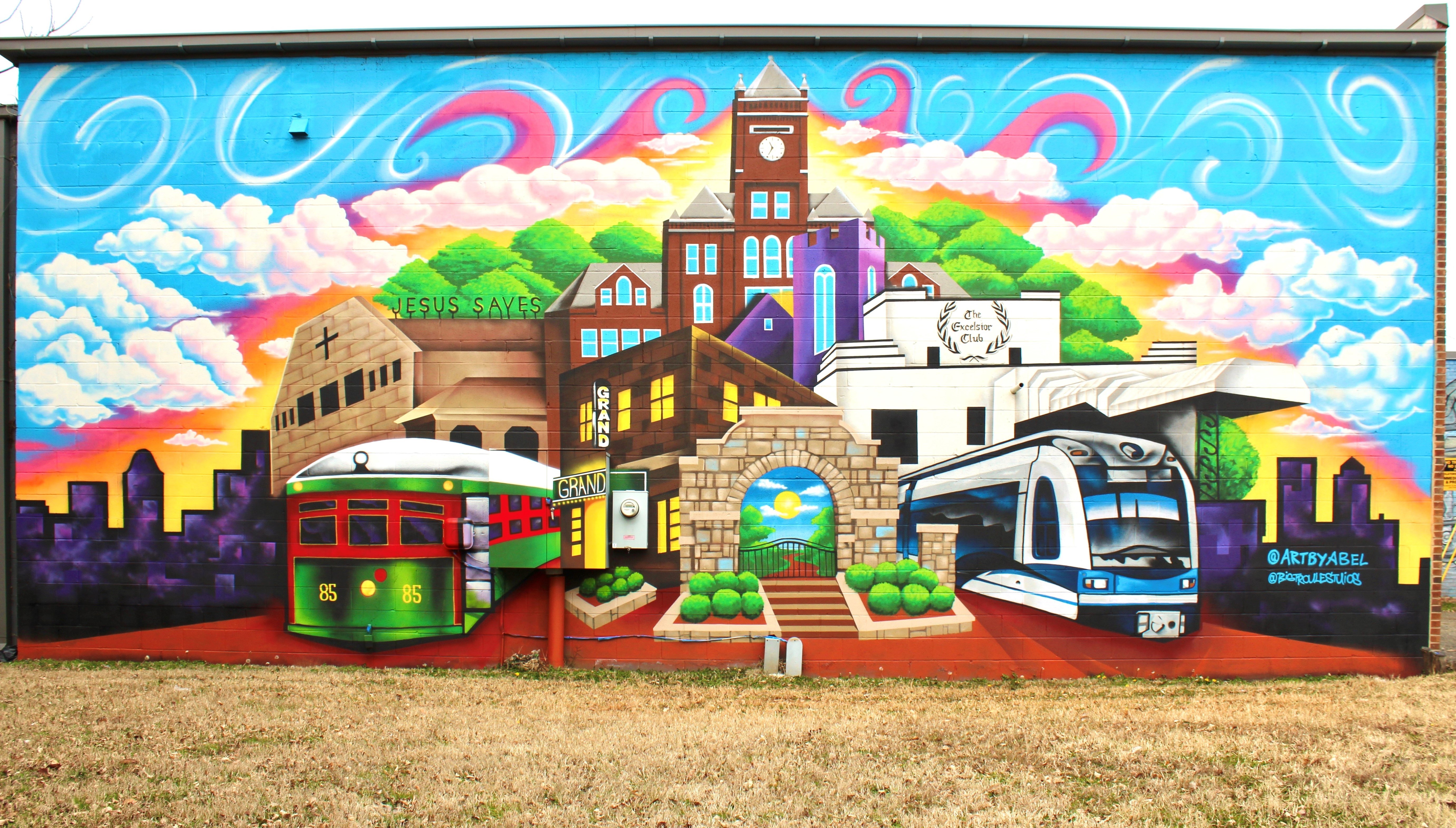
Abel Jackson partnered with Big Trouble Studios to create a bright and colorful mural on West Trade Street. It highlights many historic landmarks from the past and present in Biddleville, Charlotte’s oldest surviving Black neighborhood.
Jackson hopes to change the narrative and add an uplifting tone to the story. “It’s easy to get so caught up in trauma that you forget about the good stories of perseverance,” he explains. “There's more to our story than what we learn about in school.”
“Strange Fruit”
Artist: Dammit Wesley
Where to find it: 345 N. College St.
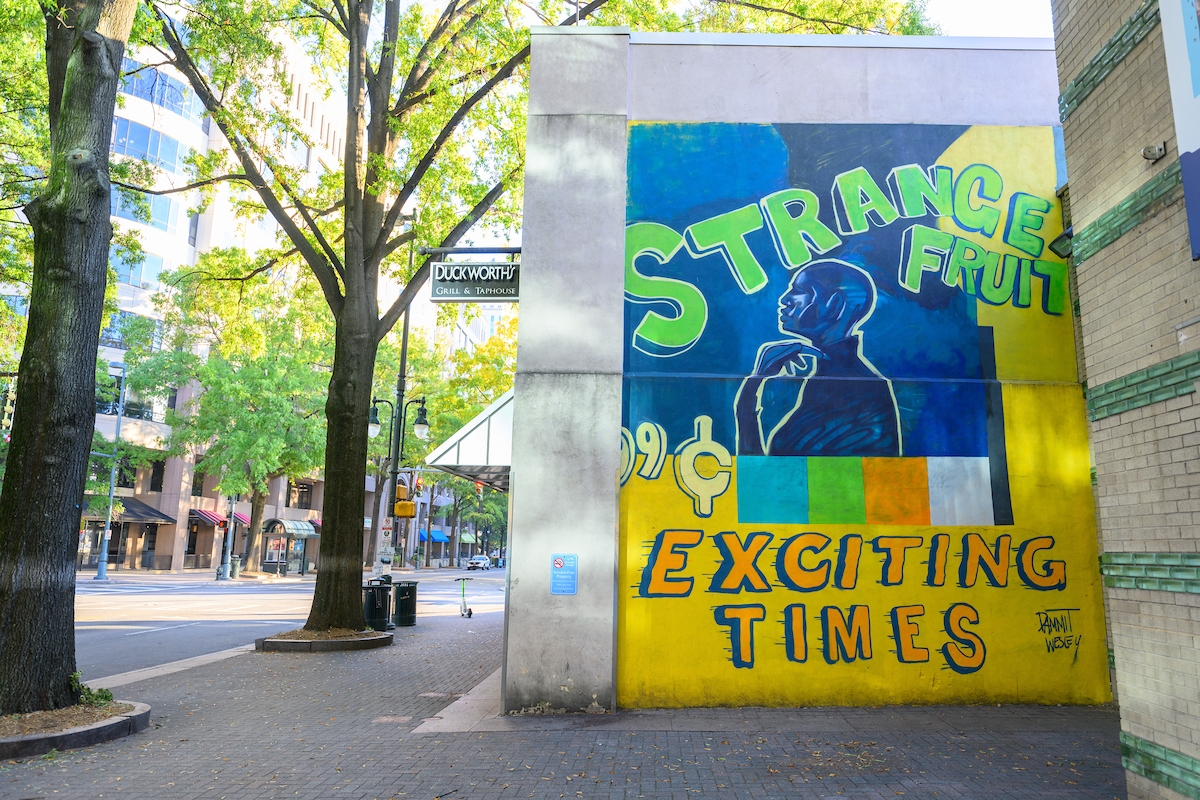
Dammit Wesley is a multi-disciplinary artist, as well as a social and political activist, whose art tells stories of the Black experience. “Black history deserves to be immortalized and embellished like its Greek, Roman and Eurocentric counterparts,” Wesley says.
“My mural is named after Billie Holiday's record ‘Strange Fruit,’ recounting the experience of seeing Black bodies in the South hanging from poplar trees like, you guessed it: Strange Fruit,” Wesley says. “This mural is a reminder of those lives lost and a harsh history that has been swept under the rug.”
The creative process can often shift while conveying these important messages. “The intent was to create an image on a hanging figure in Uptown but the attempt to depict something so heinous hurt me while I was painting. I opted to go in a lighter direction that still conveyed the same message,” he continues.
Wesley understands the subject matter is heavy and believes Black people have carried that weight for a long time and says, “It’s time to redistribute the emotional baggage.”
“NC 8”
Artists: T'Afo Feimster and Abel Jackson
Where to find it: 1600 W. Trade St.

T’Afo Feimster and fellow artist Abel Jackson teamed up to pay homage to eight influential Black musicians from North Carolina: Nina Simone, John Coltrane, Roberta Flack, Thelonious Monk, Chuck Brown, George Clinton, Maceo Parker and Max Roach.
“I grew up listening to them. I’m old school, and they are musicians I loved, all from North Carolina,” Feimster says.
The life of these musicians went beyond music and told a story of African American life and culture. Feimster continues, “These are African Americans who have excelled in their area of expertise and talents. They have made an impact, not just in the Black community, but in the nation and the world.”
“Booker T”
Artist: Georgie Nakima
Where to find it: Booker Street and Beatties Ford Road
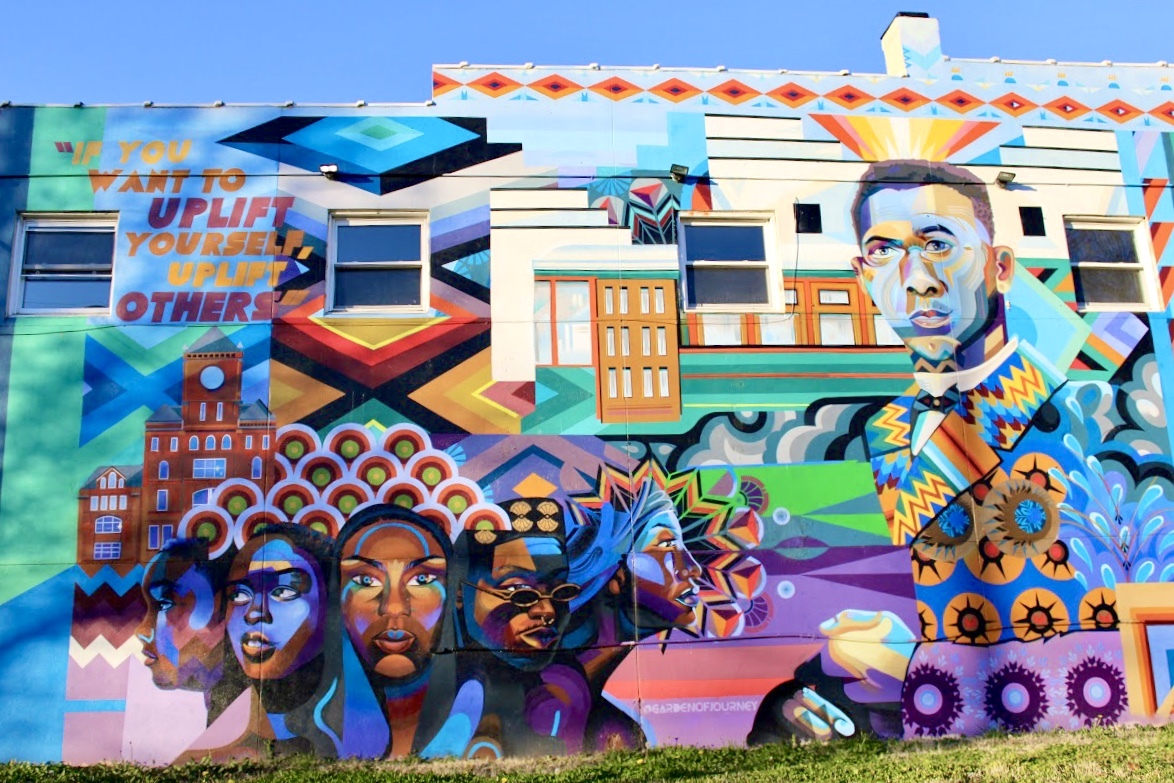
In 1913, Washington Heights was developed as a suburb for middle-income African Americans. A central street in the neighborhood, Booker Avenue pays homage to Washington.
The Washington Heights Neighborhood Association commissioned Georgie Nakima to create a bold and colorful mural that honors Washington.
On Instagram, Nakima posted, “I’m humbled to tell the mighty story of an ancestor, born a prisoner into slavery, that later became a freedom fighter and the founder of Tuskegee University.”
The vibrant and geometric accents are joined with a quote from Washington. “If you want to uplift yourself, uplift others.”
Feimster believes tools like dance, music and art should be used to educate everyone, especially the Black community. “It’s important to know our history. It’s the foundation for the present and the future.”
“The River of Life”
Artist: Abel Jackson
Where to find it: 2206 Beatties Ford Road
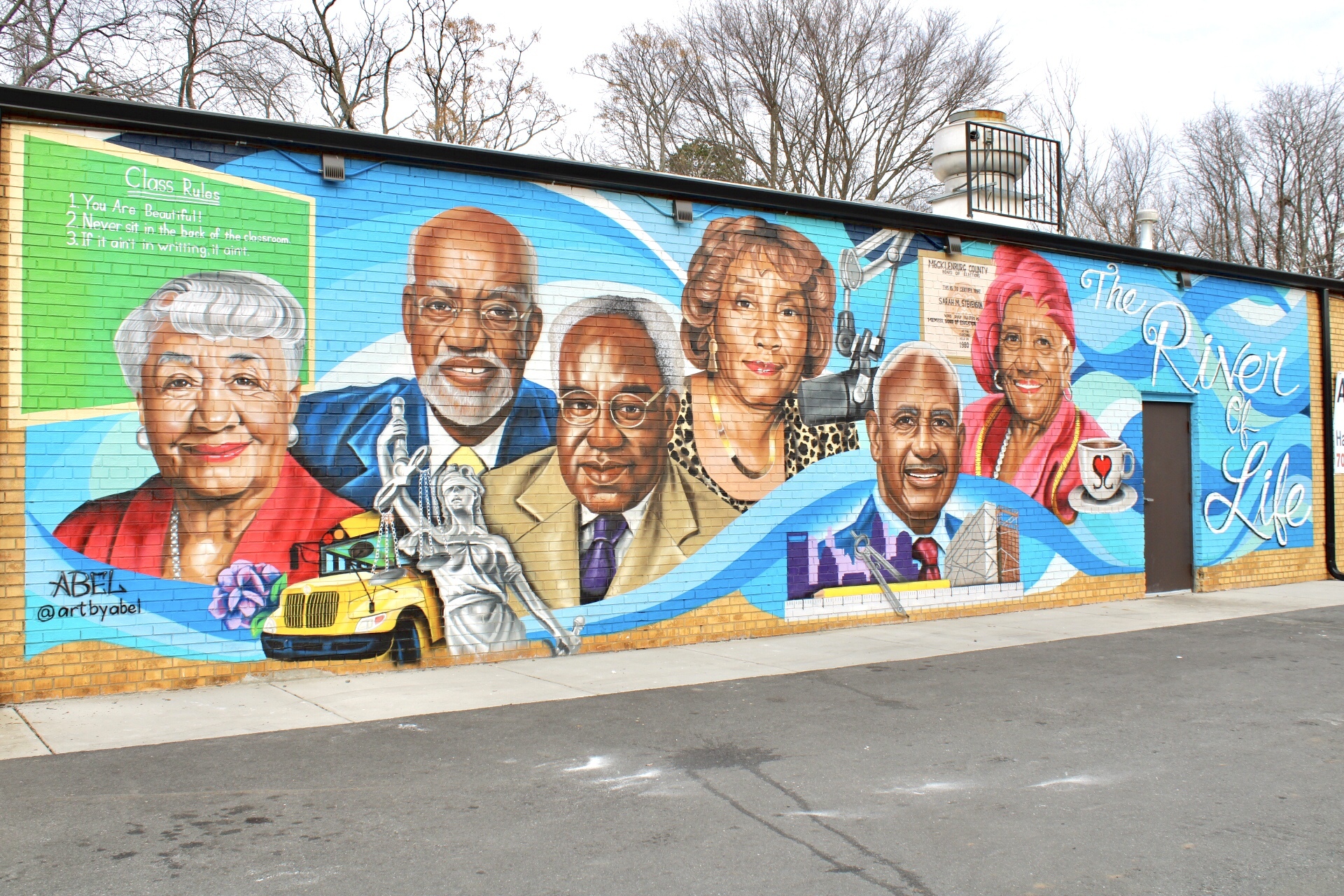
Commissioned by West End Fresh Seafood Market owner Bernetta Powell, this Abel Jackson piece honors West End legends Bertha Maxwell-Roddey, “Chatty Hattie” Leeper, Harvey Gantt, Sarah Stevenson, James Ferguson and Julius Chambers.
“My inspiration for the mural came from the community. We all worked together to show the resilience, love and history of the area,” Jackson says. “The profound individuals portrayed in the mural represent the excellence that exists on the Beatties Ford corridor.”
More murals to visit:
“Manifest Future”
Artists: Georgie Nakima, Sloane Siobhan and Janelle Dunlap
Where to find it: 1600 W. Trade St.

“The Great Escape”
Artist: Abel Jackson
Where to find it: 1635 W. Trade St.
“Fly Girl”
Artist: Sloane Siobhan
Where to find it: W. 4th St., between Tryon and Church Streets
Article originally written by Brittany Jenkins. Updates by Arielle Patters in January 2025.




